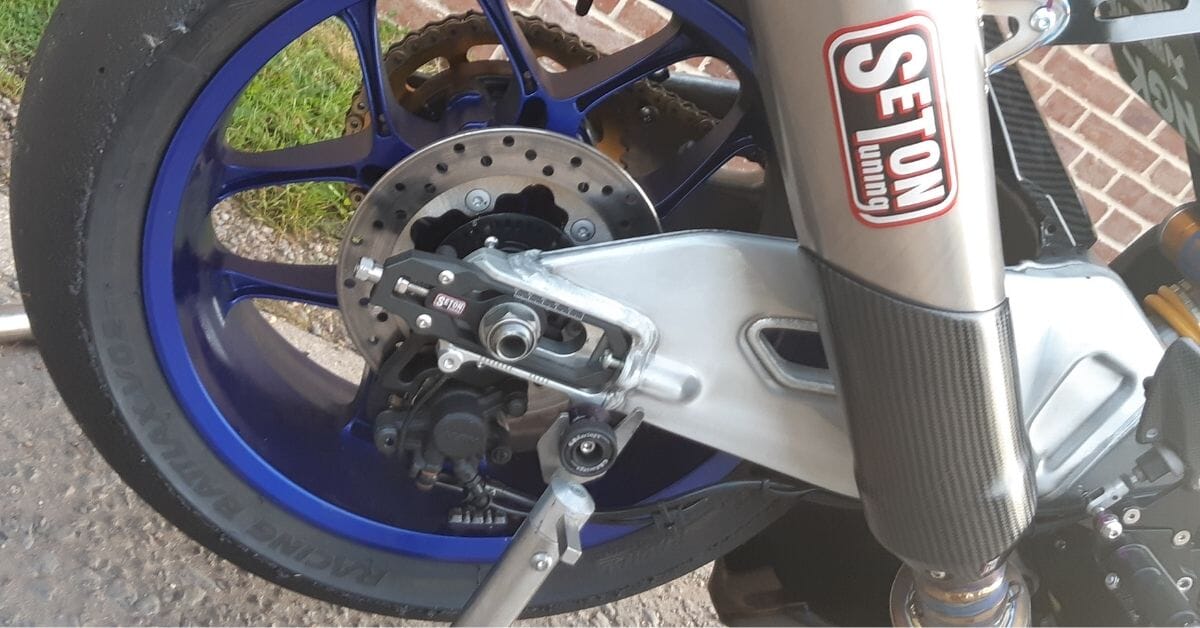Venhill Expert Advice: Using the rear brake

Back brake basics - how learning to use your rear brake again can transform your riding
Of all the controls on a motorcycle, the rear brake is perhaps the one that’s most misunderstood and misused.
Read or watch a few first ride reviews and it won’t be long until the road tester describes how poor the rear brake feels in comparison to the front - they’ve usually found a quiet stretch of road and tried each one in turn: “Hmm, the front feels good but the rear hasn’t got much bite at all” they’ll exclaim.
Well, yes, used purely for scrubbing speed the rear brake is hugely ineffective compared to the front - the transfer of weight when reducing forward momentum makes it physically impossible for it to do anywhere near as much work - but slowing you down isn’t all the rear brake can and should be used for.
Rather than simply something you use to reduce speed, think of your rear brake as an aid to chassis stability. Learn when and how to use it properly and it can transform the way you ride. Here’s how:
SETTLING THE CHASSIS
When you apply only the front brake your motorcycle pitches forward rapidly, compressing the front forks. This has a subtle effect on chassis geometry: it ever so slightly shortens the steering angle, making it turn in quicker and feel much more sensitive to steering inputs.
Both those things can be disconcerting, particularly for newer riders, and can end in the rider panicking mid-corner, overcorrecting and unsettling the chassis further still.
Applying a little rear brake just before the front, pulls the back of the bike down. This helps counteract and slow down the pitching, making the whole bike feel much more stable, level and settled.
Tip: Don’t apply too much rear brake - or leave it on too long - as you risk locking the rear when weight shifts off the back tyre.
CORRECTING A LINE
We’ve all been there: running too hot into a corner or it tightens up on you mid-turn. Your first instinct is to chop the throttle and/or grab the front brake. Again this upsets the chassis and if you grab too much of a handful, can cause the front to tuck.
A light touch on the rear brake not only scrubs a small amount of speed without the risk of locking the front, it effectively turns the rear wheel into a pivot point. The bike ‘rotates’ around the axis, pulling the front into the new line and encouraging it to turn.
Again, we’re just talking a light touch, and if it’s only a small amount you need to correct, you might not even need to release the throttle.
Tip: Don’t wait until you’re mid-corner going too fast to try this out, find somewhere safe to practice - like a large car park - starting at low speeds until you’re confident.
FEET-UP U-TURNS
The same technique can help you nail those feet-up U-turns - and nothing says I’m a confident rider quite like doing a 180º in a tight space without dangling or dabbing.
A tight 180º is difficult even for experienced riders, but add a heavy bike, a passenger and luggage into the equation and it can have you coming out in a cold sweat - followed by a hot one as you try and manhandle all that through a three-point-turn.
As you approach the turn keep your speed at a steady walking pace, slip the clutch if needed, and ‘drag’ the rear brake to get that pivot point and tighten the turn. Shift your weight to the outside of the seat, pushing the bike down but keeping your head up and eyes looking where you want to go - don’t look down at the road.
It’s easier to do on left turns, because of the position of the brake lever, but practice makes perfect; you’ll be amazed how tight a space you can turn in.
Tip: Again, practice in a car park and take some cones /soft objects with you so you can practice tighter turns safely.
CARRYING A PASSENGER
As we know, the rear brake isn’t as effective as the front at scrubbing speed due to weight transfer, but put a pillion or luggage on the back of your bike and all that changes.
- There’s more weight over the rear tyre, so the back brake instantly becomes more effective.
- There’ll be more weight to shift forwards under braking, causing the forks to compress more and the chassis to become even less stable.
So, when you have weight on the back you should be using the rear brake more. Not only will it be more effective at slowing you, it will also help to reduce that forward pitch and keep you, the bike and your pillion stable and settled.
The technique is the same as above: applying a little rear brake just before the front so it pulls the back of the bike down and reduces weight transfer.
Tip: Although there's more weight over the rear tyre, it can still lock up easily, so take it easy on that pedal.

Phil Turner has been a motorcycle journalist for 20 years. A former mechanic, he worked as a staff writer and road tester for classic, modern and scooter titles, and edited Motorcycle Sport and Leisure magazine. He turned freelance in 2008 and is a regular contributor to specialist bike titles, both online and print. Phil has owned an eclectic mix of machines, including a Lambretta GP200, three air-head BMWs, a Honda CBF600 and a Royal Enfield Bullet.


